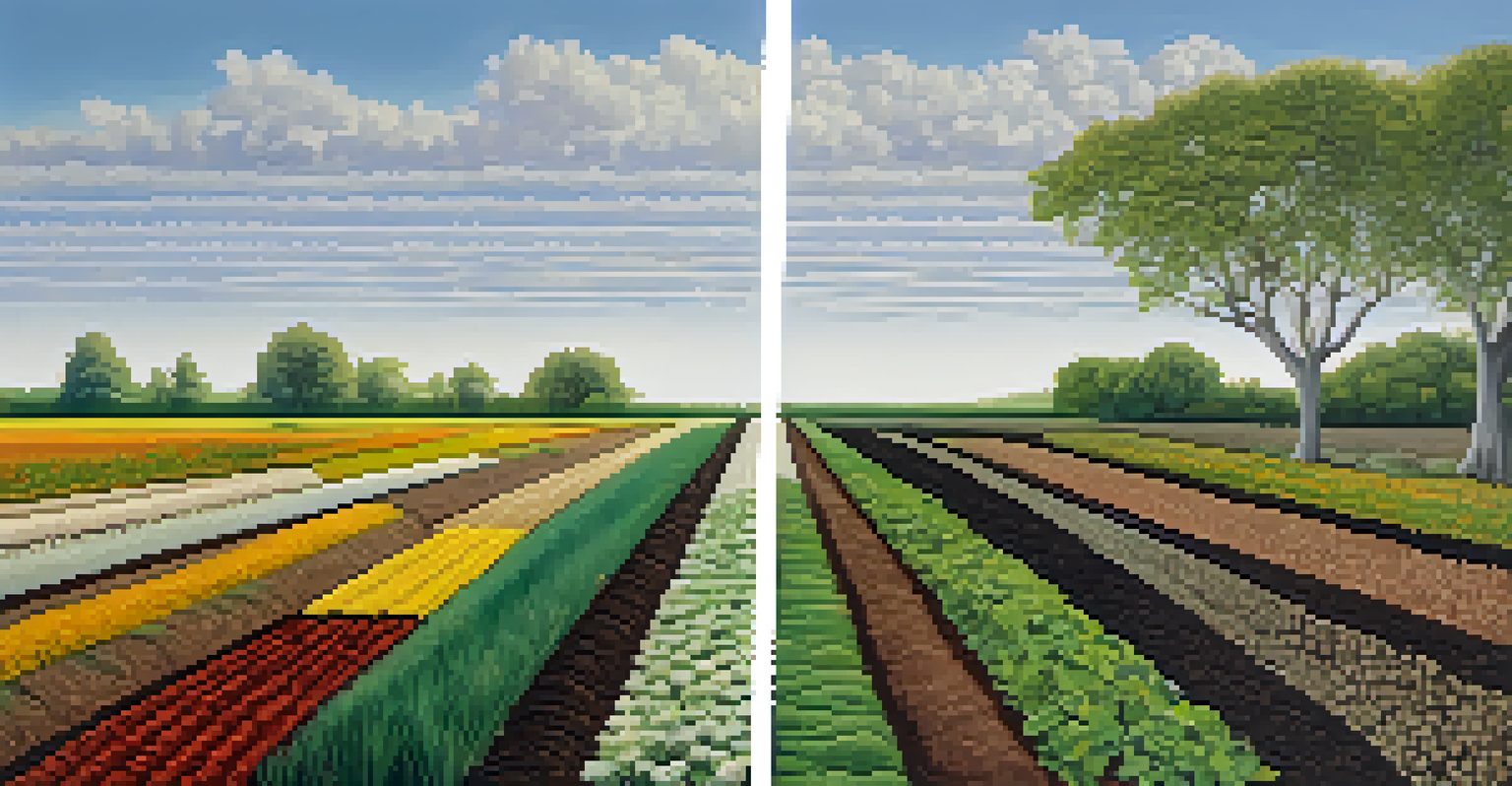The Evolution of Mycorrhizal Relationships in Plants

Understanding Mycorrhizae: A Plant's Best Friend
Mycorrhizae are symbiotic associations between fungi and plant roots. These relationships are vital for nutrient exchange, especially in nutrient-poor soils. Imagine a bustling marketplace where plants trade sugars for essential minerals; that’s the essence of mycorrhizal partnerships.
The soil is the great connector of our lives, the source and destination of all. Food, fiber, beauty, comfort, community, and spirit exist by grace of soil.
Through these connections, plants can absorb phosphorus, nitrogen, and other nutrients more efficiently. This partnership is so effective that about 90% of all plant species form mycorrhizal relationships. It’s a classic example of how cooperation can lead to mutual benefits in nature.
The evolution of mycorrhizae has significantly influenced plant adaptation and distribution. As plants ventured into various ecosystems, their dependence on mycorrhizal fungi helped them thrive in different environments, from forests to grasslands.
The Origins of Mycorrhizal Relationships
The roots of mycorrhizal relationships can be traced back to ancient times, around 400 million years ago. Early land plants faced challenges in absorbing nutrients from the soil, leading to the development of these crucial partnerships with fungi. It was a pivotal moment in plant evolution, allowing them to colonize terrestrial habitats.

Fossil evidence suggests that the earliest plants relied on mycorrhizal fungi for survival and growth. These fungi expanded the root surface area, providing plants with access to nutrients in otherwise inhospitable environments. This bond was a game-changer, enabling plants to adapt and diversify.
Mycorrhizae Boost Plant Nutrient Uptake
Mycorrhizal relationships enhance nutrient exchange between fungi and plants, allowing them to thrive in nutrient-poor soils.
As plants evolved, so did their mycorrhizal partners. Different fungal species adapted to meet the varying needs of plants, creating a complex web of interactions. This evolution laid the groundwork for the rich biodiversity we see in ecosystems today.
Types of Mycorrhizal Associations
There are two main types of mycorrhizal relationships: arbuscular mycorrhizae (AM) and ectomycorrhizae (EM). AM fungi penetrate plant root cells, forming structures that facilitate nutrient exchange. Think of it like a friendly handshake that allows both parties to benefit.
In nature, nothing exists alone.
On the other hand, EM fungi form a protective sheath around the root tips, enhancing water absorption and nutrient uptake, particularly in trees. This type of relationship is often found in forests, where the competition for resources is fierce.
Each type of mycorrhiza plays a unique role in plant health and ecosystem stability. By understanding these distinctions, we can appreciate how different plants and fungi collaborate to thrive in their environments.
The Role of Mycorrhizae in Ecosystem Health
Mycorrhizal relationships are fundamental to ecosystem health and resilience. They improve soil structure, enhance water retention, and increase biodiversity. Picture a well-organized community where everyone contributes to the greater good; mycorrhizae are essential members of this community.
Additionally, mycorrhizae can help plants withstand environmental stressors, such as drought and soil degradation. By fostering these connections, plants become more resilient and better equipped to navigate the challenges posed by climate change.
Human Impact Threatens Mycorrhizal Health
Agricultural practices and urban development disrupt mycorrhizal networks, risking biodiversity and ecosystem resilience.
Ultimately, the health of mycorrhizal networks directly impacts the overall health of ecosystems. Preserving these relationships is crucial for maintaining biodiversity and promoting sustainable land management practices.
The Impact of Human Activities on Mycorrhizal Relationships
Human activities, such as agriculture and urban development, can disrupt mycorrhizal relationships. Practices like monoculture farming can diminish fungal diversity, leading to weaker plant communities. Imagine trying to thrive in a community where everyone is the same; diversity is key for resilience.
Moreover, the use of chemical fertilizers can reduce the need for mycorrhizae, as these products often provide what plants need directly. While this may seem beneficial in the short term, the long-term consequences can be detrimental to soil health and biodiversity.
To mitigate these impacts, sustainable practices that promote healthy soil and diverse ecosystems are essential. By fostering mycorrhizal relationships, we can enhance plant health and contribute to a more sustainable future.
Future Directions in Mycorrhizal Research
Research into mycorrhizal relationships is expanding, with scientists exploring their potential in combating climate change. Understanding how these partnerships work can lead to innovative solutions for enhancing plant resilience. It’s like unlocking a treasure chest of knowledge that could benefit agriculture and ecology.
Scientists are also investigating how different environmental factors, such as temperature and moisture, affect mycorrhizal relationships. This research is crucial for predicting how ecosystems will respond to changing climates and for developing adaptive strategies.
Education Promotes Sustainable Practices
Raising awareness about the importance of mycorrhizal relationships can empower individuals to make informed decisions that benefit ecosystems.
As we continue to uncover the complexities of these relationships, the potential applications in agriculture, forestry, and ecosystem restoration are immense. Mycorrhizae may very well hold the key to a more sustainable and resilient future.
The Importance of Education and Awareness
Raising awareness about mycorrhizal relationships is vital for promoting sustainable practices. Educating farmers, land managers, and the general public can lead to more informed decisions that support ecosystem health. Think of it as planting seeds of knowledge that can grow into a thriving understanding of nature.
Workshops, community programs, and educational resources can help demystify the role of mycorrhizae in our ecosystems. By fostering a connection to the natural world, we empower individuals to make choices that benefit both plants and the environment.

Ultimately, cultivating awareness about the importance of mycorrhizal relationships can lead to a more sustainable approach to land use and conservation. Together, we can nurture the bonds that sustain our ecosystems.